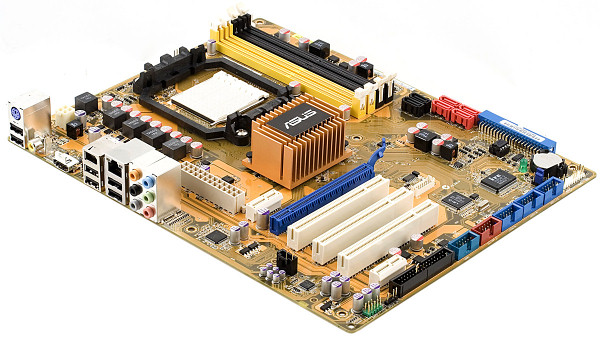ASUS M3N-H/HDMI Motherboard
|
As we already determined in our integrated chipsets review, GeForce 8300 does not catch up with AMD 780G, although its shader domain works at a higher frequency than that of GeForce 8200. Still, this chipset is successful enough to attract certain motherboard manufacturers. Thus, NVIDIA partners actively seeking ways to expand product ranges presented motherboards on it (copying the reference design as usual).
It's not hard to guess that ASUS released a product based on GeForce 8300. Probably following its rule "No chipset should be missed" for both economic and also "political" reasons. On the face of it, it's a very interesting full-size ATX motherboard supporting processors with TDP up to 125 W and equipped with its own graphics core -- NVIDIA's most advanced. It may attract users looking for a motherboard for a work PC -- featuring integrated graphics, but high-performing in other respects. It's also an attractive product for users going with integrated graphics as a temporary solution until they install a discrete graphics card. Now let's take a look at this motherboard.
 
Unfortunately, it suffers from a lot of strange design flaws, which are not typical of ASUS solutions. We have an impression that this motherboard was put under care of some probationary employee or a trainee. See for yourself: full-size format and single-bridge chipset, what can be easier to layout everything in the perfect way? However, two SATA ports are sure to be blocked by a long graphics card (most NVIDIA cards, for example.) A power connector in the center of the board does not help this motherboard either, especially if you have a large CPU cooler. Anyway, it's not optimal to have the thickest power cord go above half the board. The motherboard houses three fan headers, but they are all installed in the upper part of the board, while it's more optimal to distribute them along the entire surface. In particular, it's more convenient to plug case fans to a header in the bottom of the board. To say nothing of the floppy connector in the very bottom, even though it was possible to install this element behind memory slots.

And finally, here goes the oddest solution that will certainly make the motherboard less attractive to its potential users. Video connectors on the rear panel include only HDMI. If you need VGA, you should plug an additional bracket to the connector behind PCI slots. It definitely deteriorates analog signal quality. Besides, the bracket will occupy one slot on the rear panel and decrease the number of available PCI slots.
We had no problems with audio output via HDMI (stereo-PCM with the maximum bitrate of 192 kHz/24 bit) and video output at 1360x768 (Full HD resolutions are also supported, but some users of HD-Ready devices used to have problems with early versions of the drivers, so such resolutions are more interesting to test). Heatsink on the chipset resembles the one installed on the M3A-H/HDMI motherboard, which cools only AMD 780G Northbridge (lower heat release). On the other hand, that motherboard supports GPU overclocking, while motherboards on GeForce 8200/8300 do not offer such features. And this heatsink is more than enough for GeForce 8300 in the nominal mode.

The motherboard uses a 5-phase (4+1) switching voltage regulator for the CPU. Phases responsible for CPU are equipped with four field-effect transistors per channel. And the memory controller phase comes with two transistors. This circuit contains 10 x 560 uF and 4 x 270 uF capacitors. The motherboard uses only brand solid-state capacitors and potted coils. Praiseworthy design.
There are no empty seats on the board. Motherboard dimensions -- standard ATX (305x244 mm), 9-screw mount, all corners are firmly fixed.
Write a comment below. No registration needed!
|
|
 |
|
|
|


